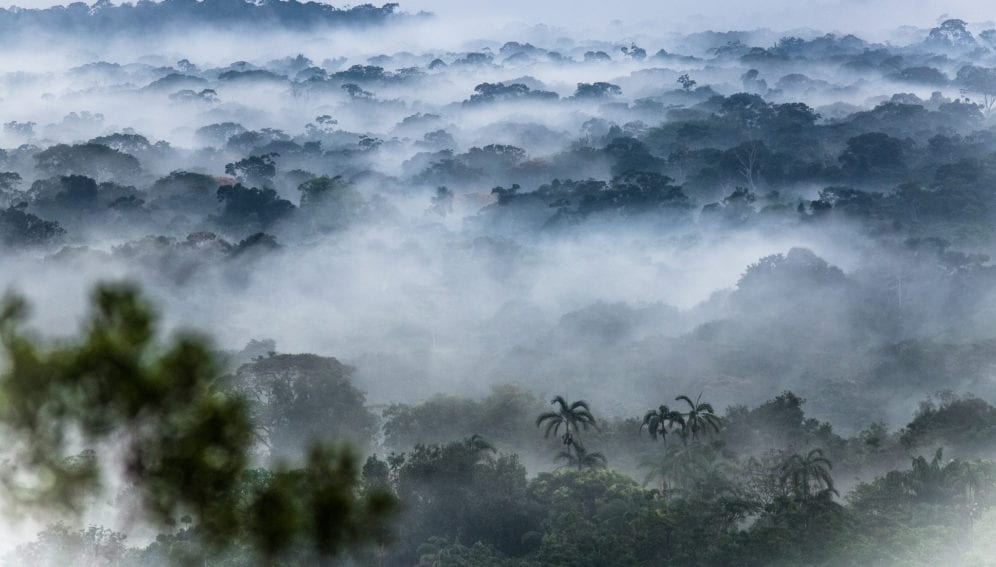14/03/19
Brazilian city’s pollution spreads to untouched Amazon rainforest

Send to a friend
The details you provide on this page will not be used to send unsolicited email, and will not be sold to a 3rd party. See privacy policy.
[SÃO PAULO] The pollution plume produced in the city of Manaus, northwest Brazil, tends to drift towards pristine areas of the Amazon rainforest, elevating up to 50 times the concentration of tiny, harmful particles in parts of the forest with near pre-industrial atmospheric conditions.
This is one of the key findings of a team of researchers from the United States, Brazil and Germany studying how humans have affected the Amazon's atmosphere.
They analysed how pollution pumped out in Manaus alters the life cycle of aerosols and clouds and how these elements interact in the atmosphere, affecting rainfall in the Amazon forest.
“The main question is how increased human activities will affect Earth's climate, forest's atmosphere, clouds, rainfall and human health in the future, especially in developing regions like the Amazon.”
ManishKumar Shrivastava, Pacific Northwest National Laboratory
By doing so, they also found that pollution is increasing the formation of particles that can cause severe cardiopulmonary diseases.
Manaus is the capital of the state of Amazonas, with nearly two million residents and surrounded by jungle on all sides. It also has a strong industrial base and a fleet of 700,000 vehicles on its roads.
Yet, a few hundred kilometres away, large tropical forest areas remain untouched, with conditions close to those seen before human activities started influencing Earth's atmosphere.
It makes the Amazon one of the few places on Earth where scientists can study atmospheric chemistry in both past and present conditions.
Researchers analysed measurements taken from aircraft and ground-based radar in 2014 and 2015.
Some readings were taken in eastern areas, ahead of prevailing winds over Manaus, where the atmosphere is not yet contaminated by the city's pollution. Others were taken in Manaus itself and downwind of the city.
The data was processed with an advanced computer model that simulated how chemical reactions form particles in the atmosphere
The findings suggest that pollution from Manaus may increase the concentration of nitrogen oxides from between 10 and 50 times in untouched areas of the Amazon.
Researchers say this would also increase the formation of oxidants such as ozone and hydroxyl radicals, which in turn convert much of the forest’s volatile organic emissions into an air pollutant called secondary organic aerosols, increasing the volume of aerosols in the atmosphere.
“The pollution plume from Manaus increases the formation of secondary organic aerosols by up to 400 per cent in pristine forests,” says ManishKumar Shrivastava, a modelling Earth scientist at the Pacific Northwest National Laboratory, in the United States, and lead author of the study published in Nature Communications.
“The high concentration of these aerosols in the Amazon’s atmosphere could interfere in plants’ photosynthetic processes and cloud formation, affecting rainfall patterns in that region,” says Paulo Artaxo, a physicist at the University of Sao Paulo’s Institute of Physics and co-author of the study.
Artaxo adds that many other big cities in the Amazon region, such as Santarém and Belém, may be pumping out their pollution directly into the rainforest, affecting it in a similar way.
Researchers also point out that the same effect observed in the Amazon region may be happening in other places where there are cities near forests, such as in parts of Africa and South-East Asia.
“Secondary organic aerosols may also penetrate deep into human lungs causing cardiopulmonary diseases,” says Shrivastava, who is one of many scientists worldwide creating complex computer models to explain the atmosphere and climate behaviour.
The study was carried out under the auspices of the Green Ocean Amazon (GOAmazon) program, launched in 2014 with support from the US Department of Energy, FAPESP, the Amazonas Research Foundation (FAPEAM), and the National Science Foundation (NSF).
To William Laurance, a biologist at James Cook University in Townsville, Australia, the results are worrying because they demonstrate that the Amazon's pristine atmosphere is showing a big increase in pollutants such as nitrous oxide and ozone.“Scientists do not yet understand what it will signify for the Amazon's climate and ecology — what many people call ‘the lungs of the planet'. What they do know is that the Amazon's atmosphere is now chronically polluted by human activities,” he tells SciDev.Net.
To Shrivastava, with rapid urbanization, increasing demand for electricity and transport, and deforestation for agricultural purposes, the Amazon will likely see further effects of human activity and pollution.
“The main question is how increased human activities will affect Earth's climate, forest's atmosphere, clouds, rainfall and human health in the future, especially in developing regions like the Amazon,” he tells SciDev.Net.
The study published in Nature Communications was supported by FAPESP, a donor of SciDev.Net.
This piece was produced by SciDev.Net’s Latin America and Caribbean edition













